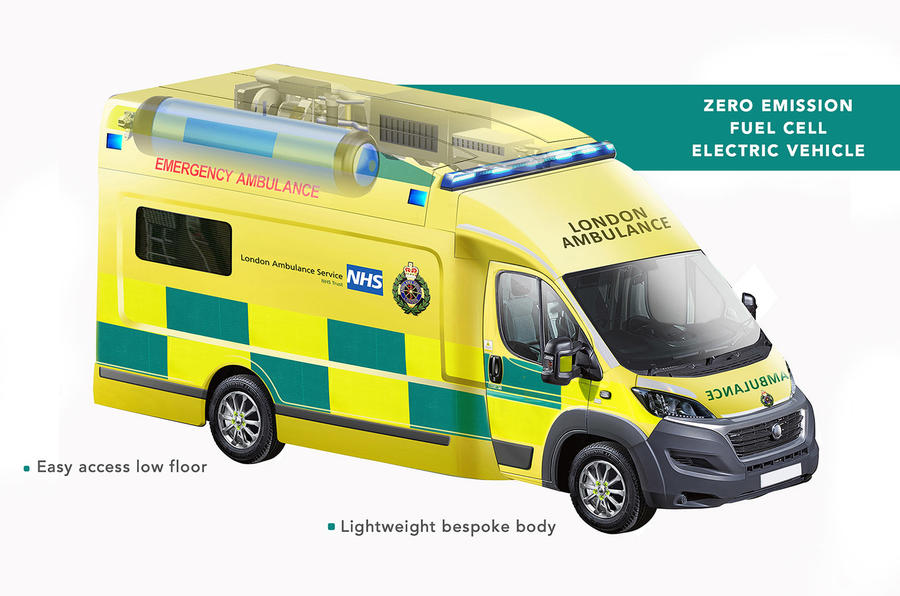Commercial vehicle fuel cell conversion specialist Ulemco will deliver the first hydrogen-fuelled ambulance for use on London's streets later this year.
Named Zerro (short for Zero Emission Rapid Response Operations), the ambulance will be built by Ulemco and its partners Lyra Electronics, Ocado and Promech Technologies.
Ulemco aims to deliver a prototype of the Zerro to the London Ambulance Service NHS Trust in the autumn.
Currently in the production process, the prototype will be powered by a combination of a 30kW fuel cell provided by Ballard, with 8kg of on-board hydrogen storage and a 400V 92kWh battery. The fuel cell acts as a range-extender to charge the battery when needed.
This powertrain, according to Ulemco, will allow the Zerro ambulance to achieve an average daily range of 200 miles, with a top speed of 90mph.
The ambulance features a bespoke lightweight body sat on a low-frame chassis, which includes innovations such as a low-access floor to make it easier to transport patients and is good for a payload of at least 900kg.
The hydrogen tank and much of the power electronics are mounted within the roof section.
A Ulemco spokesman said: “The aim of the project is to show that this weight target can be met with the combination of this powertrain configuration and the lightweight structure, and using a low-floor design rather than needing to include heavy lifting equipment, alongside work to integrate the internal electrical power needs within overall vehicle electrical system design.”
Founded in 2014 and based in Liverpool, Ulemco is a hydrogen conversion company. It currently specialises in commercial fleet conversions, with a view to growing the market significantly over the next 18 months. However, it plans to expand to other vehicle types in the longer term. It also intends to create a hydrogen refuelling network.
READ MORE
Hydrogen cars explained: the technology targeting a fuel-cell future





Join the debate
Add your comment
Mounting as much heavy equipment as high as possible, in which case they might want to want to install a roll cage as well. Then as it all lowers the internal roof height the medics might need an ambulance when their back plays up from having to stoop so much.